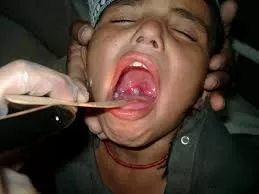A recent pilot study has revealed a promising new method to simplify the management of tuberculosis (TB) medication using finger sweat. Researchers at the University of Surrey, led by PhD student Katherine Longman and corresponding author Dr. Melanie J. Bailey, discovered that isoniazid, a key TB medication, can be detected in finger sweat for up to six hours after administration. This noninvasive method could revolutionize the way TB treatment adherence is monitored.
Challenges in TB Medication Adherence
TB treatment success hinges on consistent medication adherence. Poor compliance and inadequate drug exposure are significant risk factors for treatment failure and the development of drug resistance. Traditional methods for monitoring drug levels involve blood, saliva, or sweat samples, which can be invasive, painful, and difficult to manage.
Dr. Bailey emphasized the limitations of blood sampling, stating, “Blood is painful to collect and difficult to transport. Finger sweat offers a completely noninvasive way to sample patients.” Despite its potential, using finger sweat to determine medication adherence had not been thoroughly examined until now.
Pilot Study Methodology and Findings
The study, published in the International Journal of Antimicrobial Agents, involved ten adults with TB who provided finger sweat, blood, and saliva samples at various intervals up to six hours after taking a controlled dose of isoniazid (median of 300 mg daily). The researchers used liquid chromatography–mass spectrometry to analyze the samples.
The results were promising: isoniazid and its metabolite acetyl isoniazid were detected in at least one finger sweat sample from all participants, with detection rates of 96% and 77%, respectively. The study found that isoniazid was consistently present in finger sweat between one and six hours after administration, with acetyl isoniazid showing higher detection rates at six hours.
To account for variability in sweat sample volume, the researchers examined creatinine levels, finding a strong correlation between finger sweat and serum isoniazid concentrations after normalization. The Pearson’s correlation coefficient was 0.98 (P < .001) with creatinine normalization, compared to 0.52 (P = .051) without it.
Implications and Future Research
Dr. Bailey noted the unexpected success of the study: “We were surprised that we were able to detect the drug in so many patient samples because the sample volume is so low, and so detection is challenging. This is exciting as it unlocks the possibility to test drug levels, as well as providing a yes/no test.”
Pulmonologist Dr. Krishna Thavarajah from Henry Ford Hospital highlighted the potential impact of this noninvasive technique on TB management. “I was struck by the correlation between the sweat and serum values of INH [isoniazid] and by the level of sophistication of noninvasive testing,” she said. Dr. Thavarajah suggested that finger sweat testing could serve as an adjunct or alternative to directly observed therapy (DOT), which faces challenges such as low adherence rates and logistical issues.
While the findings are promising, the study’s limitations include a small sample size and the need for confirmation testing with established methods. More research is necessary to validate the finger sweat strategy in larger, real-world samples and to explore its accuracy and effectiveness in monitoring treatment adherence.
The study was funded by the Engineering & Physical Sciences Research Council and Santander PhD Mobility Awards 2019. Neither the researchers nor Dr. Thavarajah reported any financial conflicts of interest.












